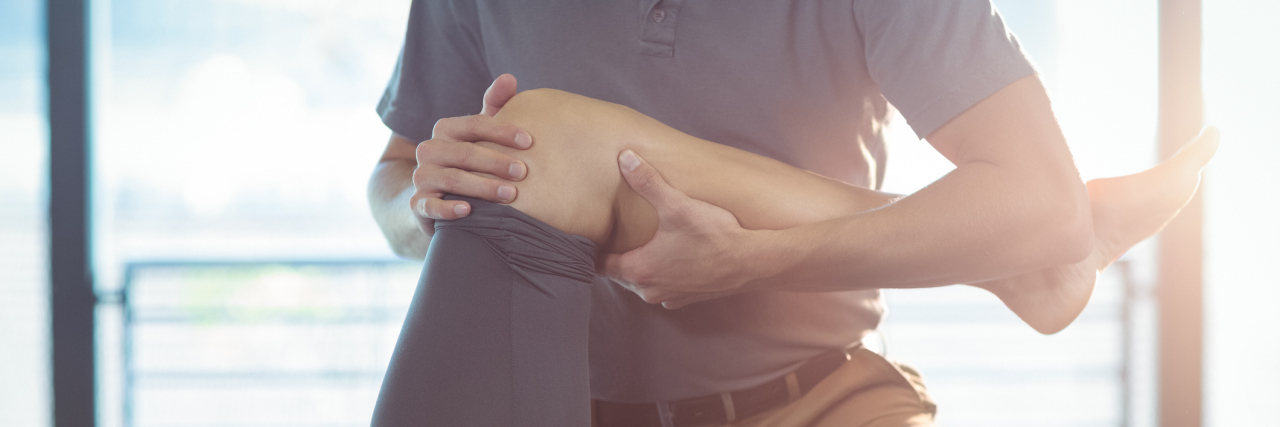6 Therapies I Use Since Pain Medication Doesn't Work for Me
Editor’s note: Any medical information included is based on a personal experience. For questions or concerns regarding health, please consult a doctor or medical professional.
Following a car accident that left me with a traumatic brain injury and disabling chronic pain, it was disheartening to discover that pain medication was not effective for me. In order to establish a new normal in my life, I had to get my pain under control, so I decided to explore some alternative pain management techniques after codeine didn’t do the trick. While some kinds of therapy worked better than others for me, I learned that sometimes, recovery takes a whole team. When I pushed through my uncertainty about trying alternative therapies, I found several options that complement each other well and help keep my pain manageable.
1. Acupuncture. I was the last person to be caught within a city block of an acupuncturist’s office before my accident, but I was surprised with how mild the experience was during my first appointment. Even as an infamously needle-averse person, I was able to relax and take a little nap during my session; I could not even feel many of the needles. When the muscles in my back felt “rock-like” with tension (my acupuncturist’s words), I felt an improvement almost immediately after the application of a few needles.
2. Cupping. Many acupuncturists also offer cupping, a therapy that utilizes glass or plastic cups to create suction on your back, contracting and releasing your muscles to relieve tension. The cups are sometimes left stationary to do their work and other times are moved up and down tight muscles, and it feels similar to a deep-tissue massage. I found it to be twice as effective as a massage session in decreasing muscle cramps and pain, effectively managing pain in half the time and for half the price.
3. Assisted stretching. Also known as Thai massage, assisted stretching can increase mobility and alleviate muscular stiffness and pain. After being in bed for several months following my accident, my muscles were short and tight, making everyday chores a challenge. Stretching with a therapist who manipulated my body for me pushed me harder than I was capable of without help, and the therapist focused on stretches that would ease the specific pain I was experiencing. I felt much more limber afterward and now make it a regular appointment.
4. Flotation therapy. We all know the feeling of taking a load off at the end of a hard day by putting your feet up. The elevation of your feet helps if they’re hurting, right? Well that’s what flotation therapy sessions accomplish, but for my whole body. For an hour and a half I dozed in a quiet, dark pod, held afloat by the warm, salty water. Being weightless for a while took the pressure off my physical injuries, giving me a break from physical pain and mental stress too.
5. Cryotherapy is used by many athletes to speed recovery. You spend two to three minutes in a small chamber with subfreezing temperatures. The body reacts to the cold by undergoing vasoconstriction, allowing the blood to become super oxygenated, supplying nutrient-rich blood which rushes through the body once the cold is removed. This shock to the system through extremely cold temperatures can increase blood flow and reduce pain and inflammation, which speeds up my healing process.
6. CBD oil made from the hemp plant contains no THC and so is a form of marijuana that is legal to purchase in the United States. CBD is not considered a form of “medical marijuana,” products which may be made from plants with high concentrations of psychoactive THC, because CBD oil has no psychoactive effects. Studies have shown that CBD can help things like anxiety, epilepsy, inflammation and chronic pain. It can be bought online, and is available in liquid form and in balms so you can spread it where it’s needed.
On my journey to find pain relief that would work for me, I learned to not be afraid to try a new modality if one didn’t work. There is no one answer for everyone and it can take a bit of experimentation until you hit a good balance. Because I opened myself up to more diverse options when pain medications didn’t help me, I have gained a lot of self-knowledge and awareness about my body that I get to take with me moving forward. And I believe thinking outside the box has given my body its best shot at recovery; you never know how well your body might respond and how close to pain relief you might be until you give it a shot!
Getty image by Wavebreakmedia

